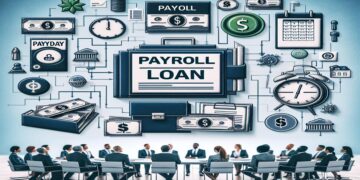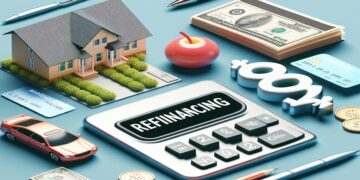
What is the best strategy to pay off loan debts?
Managing loan debts can feel daunting, but implementing effective strategies like the Snowball and Avalanche methods can lead to financial freedom. Understanding your debts, setting realistic goals, and considering options like debt consolidation are essential steps toward achieving successful debt repayment and maintaining motivation along the way.

How payroll loans work and who they are for
Payroll loans provide quick cash by allowing borrowers to access funds against their future paychecks, making them ideal for those facing urgent expenses or limited credit options. While they offer convenience, caution is crucial due to potential high fees and the risk of falling into debt cycles.

How to calculate the total effective rate (TER) of a loan
Calculating the Total Effective Rate (TER) of a loan is essential for understanding the true borrowing costs. By considering interest rates, fees, and insurance, borrowers can make informed comparisons among loan options. This comprehensive approach helps uncover hidden expenses, ultimately leading to smarter financial decisions.

How to refinance a loan and reduce interest rates
Refinancing a loan can lower interest rates, reduce monthly payments, and simplify debt management. Key steps include assessing your current loan, checking your credit score, researching market rates, shopping for lenders, and understanding the closing process. A well-informed approach can lead to significant financial savings.

How to Identify Hidden Fees in Personal Loans
This article explores how to identify and avoid hidden fees in personal loans, such as origination, prepayment, and late payment fees. By understanding these costs and implementing effective strategies, borrowers can make informed decisions, ultimately saving money and achieving better financial health.

What to Consider Before Applying for a Student Loan
Navigating student loans requires careful evaluation of your financial needs, types of loans, interest rates, and repayment options. Consider alternatives like scholarships and understand the long-term implications of borrowing to ensure a manageable financial future post-graduation. Make informed decisions to maximize your educational investment.

Difference between personal loan and credit line
This article explores the differences between personal loans and credit lines, highlighting their structures, repayment options, and ideal usage scenarios. Personal loans provide fixed amounts for planned expenses, while credit lines offer flexible borrowing for unplanned costs. Understanding each option helps in making informed financial decisions.

Apply for Wells Fargo Personal Loan Credit Card Easy Steps Guide
Wells Fargo Personal Loans offer flexible loan amounts with competitive rates, no origination fees, or prepayment penalties. Enjoy quick access to funds and customized repayment terms, allowing borrowers to tailor their loan experience to their financial needs and save on overall costs.

The Role of Microcredits in the US Economy
Microcredits empower underserved communities in the U.S. by providing small loans to those excluded from traditional financing. They boost entrepreneurship, create jobs, and enhance economic resilience, despite challenges like high interest rates. These loans foster technological adoption and innovation, promoting inclusive economic growth and community prosperity.